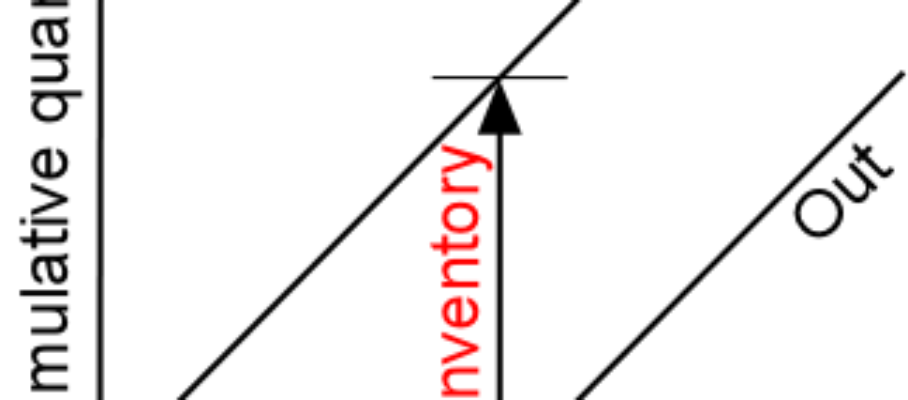Sep 10 2016
How to Pick the Fastest Line at the Supermarket | New York Times [Debunk]

“[…] Choose a single line that leads to several cashiers
Not all lines are structured this way, but research has largely shown that this approach, known as a serpentine line, is the fastest. The person at the head of the line goes to the first available window in a system often seen at airports or banks. […]”
Sourced through the New York Times
Michel Baudin‘s comments:
No! Research shows no such thing. The serpentine line does not reduce the customers’ mean time through the system. Little’s Law tells us that, in steady state, regardless of how the queue is organized:



Feb 17 2017
Variability, Randomness, And Uncertainty in Operations
This elaborates on the topics of randomness versus uncertainty that I briefly touched on in a prior post. Always skittish about using dreaded words like “probability” or “randomness,” writers on manufacturing or service operations, even Deming, prefer to use “variability” or “variation” for the way both demand and performance change over time, but it doesn’t mean the same thing. For example, a hotel room that goes for $100/night in November through March and $200/night from April to October has a price that is variable but not random. The rates are published, and you know them ahead of time.
By contrast, to a passenger, the airfare from San Francisco to Chicago is not only variable but random. The airlines change tens of thousands of fares every day in ways you discover when you book a flight. Based on having flown this route four times in the past 12 months, however, you expect the fare to be in the range of $400 to $800, with $600 as the most likely. The information you have is not complete enough for you to know what the price will be but it does enable you to have a confidence interval for it.
Share this:
Like this:
By Michel Baudin • Laws of nature 0 • Tags: Deming, Mississippi flood of 1993, Randomness, Toyota, Uncertainty, Variability, Variation